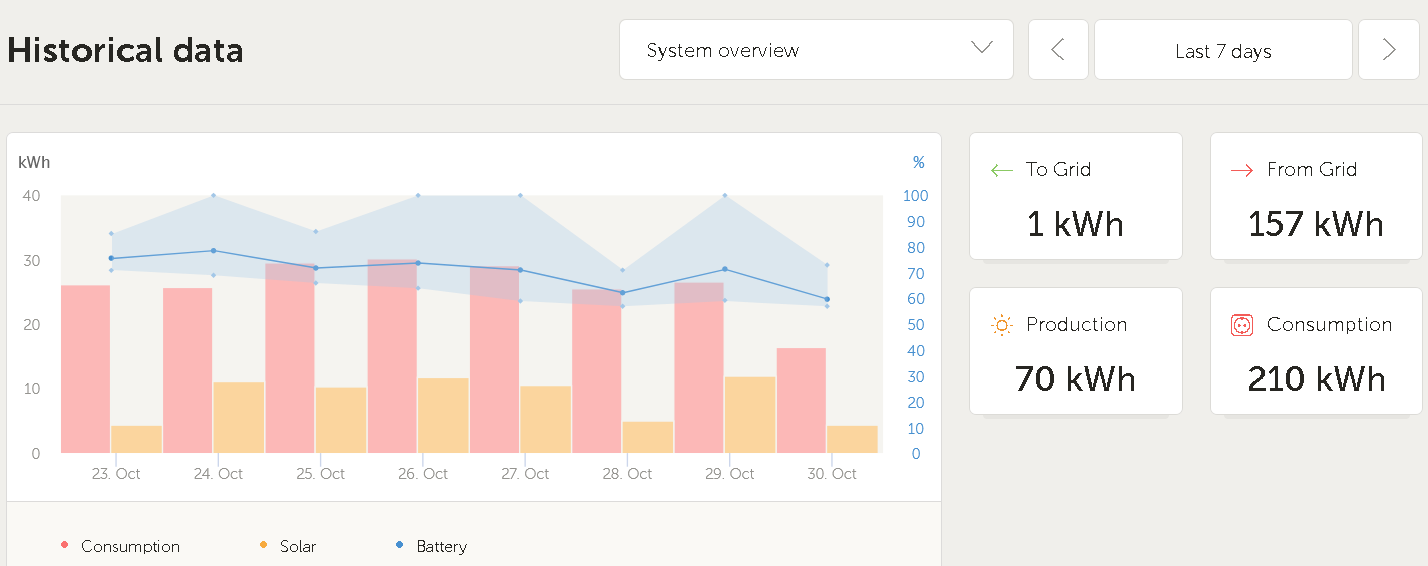I did recently upgrade my batteries from lead to 4 Pylontech LiFePO4. I have an EasySolar 5k installed and running ESS without feed-in to the Grid yet. For the first two weeks I did still run the system with Batterie Life enabled.
https://www.victronenergy.com/media/pg/6292-ESS_design_and_installation_manual-html5/en/controlling-depth-of-discharge.html#UUID-af4a7478-4b75-68ac-cf3c-16c381335d1e
But I came to realize that I waste quite an amount of potential yield because the dynamic low-limit never got below 60% so far. Even I like in general the behaviour given by a dynamic low-limit, Batterie life isn't usable in my case.
Note, I have a big consumer in the form of a heat pump during the heating period. But I could imagine that a more sophisticated Batterie life algorithm could do the job much better than it does now.
But I could imagine that a more sophisticated Batterie life algorithm could do the job much better than it does now.
I don't see an obstacle in the way that the current ESS handles the increase of the dynamic low-limit by 5% each day until the energy which the system draws from the batteries during a 24hr period matches the energy being replaced. But I consider to use just the opposite of the logic to decrease to dynamic low-limit as not accurate in many use cases. In my case for instance a sunny day could potentially rise the SOC level of around 50%. I think it wouldn't be a great deal to create an algorithm to calculate the daily potential rise of the SOC and use this value to decrease the dynamic low-limit. For instance it the SOC level has increased in 3 hours from 60 to 95 % and then stays for a while above 95% the dynamic low-limit could be reduced in the evening by at least 30%. So after sunset the batteries will discharge to 30% and if the sun shines the next day it probably get charged to something between 80-100%.
With this kind of logic I still would get the benefit of a higher SOC in a period of cloudy weather for more then one day, without loosing potential solar yield.
